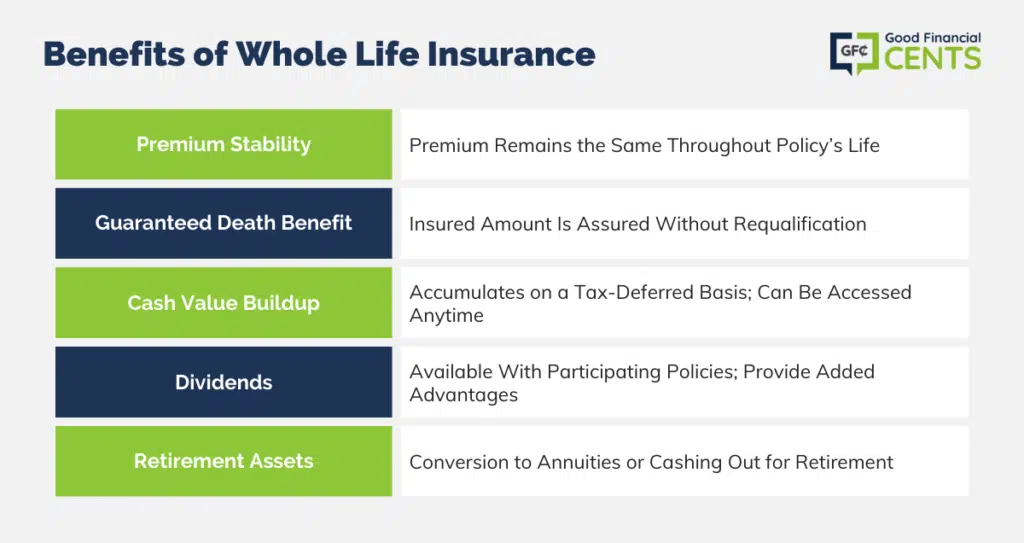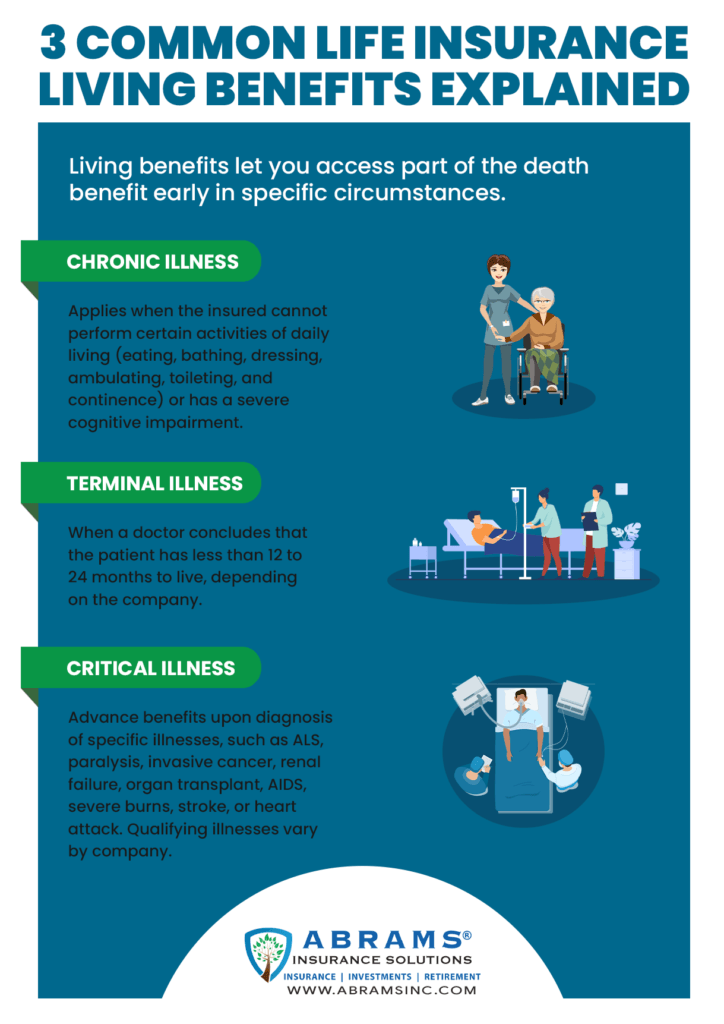Seat Belt Injuries from Car Accidents
Seat belts are essential safety devices that can save lives and prevent serious injuries in car accidents. However, seat belts can also cause injuries if they are not used properly. Seat belt injuries can range from minor bruises to serious injuries, such as spinal cord injuries and internal bleeding.
Causes of Seat Belt Injuries
There are several factors that can contribute to seat belt injuries, including:
- Improper use of seat belts: Seat belts should be worn low and snug across the hips and chest. If a seat belt is worn too loosely, it can allow the wearer to move too much in a crash, which can increase the risk of injury.
- Defective seat belts: Seat belts can be defective in a number of ways, such as being too weak or not retracting properly. Defective seat belts can increase the risk of injury in a crash.
- Type of car accident: The type of car accident can also affect the risk of seat belt injuries. For example, people who are involved in rollovers are more likely to suffer seat belt injuries than people who are involved in front-end collisions.
Symptoms of Seat Belt Injuries
The symptoms of seat belt injuries can vary depending on the severity of the injury. Some common symptoms include:
- Bruising or swelling on the chest or abdomen
- Pain in the chest, abdomen, or back
- Difficulty breathing
- Numbness or tingling in the arms or legs
- Headache
- Nausea or vomiting
Treatment for Seat Belt Injuries
The treatment for seat belt injuries will depend on the severity of the injury. Minor injuries may only require rest and pain medication. More serious injuries may require surgery or other medical treatment.
Prevention of Seat Belt Injuries
There are several things you can do to prevent seat belt injuries, including:
- Always wear your seat belt. Seat belts are the most effective way to prevent serious injuries in a car accident.
- Make sure your seat belt is properly adjusted. The seat belt should be worn low and snug across the hips and chest.
- Inspect your seat belts regularly. Look for any signs of damage, such as tears or frayed edges. If you find any damage, have your seat belts replaced.
Seat Belt Injuries from Car Accidents: A Hidden Danger
While seat belts are essential for saving lives in car accidents, they can also cause injuries. These injuries can range from minor bruises to more serious ones, such as broken bones and internal bleeding. It’s crucial to be aware of the potential risks and take steps to reduce the chances of being injured by a seat belt in the event of a crash.
Chest Injuries
Seat belts can cause chest injuries, such as broken ribs, bruising, and lung contusions. These injuries occur when the seat belt exerts pressure on the chest during a crash. The severity of the injury will depend on the force of the impact and the position of the seat belt. In some cases, chest injuries from seat belts can be life-threatening.
Spinal Injuries
Seat belts can also cause spinal injuries, such as fractures, dislocations, and herniated discs. These injuries can occur when the seat belt puts pressure on the spine during a crash. The severity of the injury will depend on the force of the impact and the location of the seat belt. In some cases, spinal injuries from seat belts can lead to paralysis.
Neck Injuries
Seat belts can also cause neck injuries, such as whiplash and neck sprains. These injuries occur when the head is thrown back and forth during a crash. The severity of the injury will depend on the force of the impact and the position of the head. In some cases, neck injuries from seat belts can be very painful and debilitating.
Abdominal Injuries
Seat belts can also cause abdominal injuries, such as bruising, internal bleeding, and organ damage. These injuries occur when the seat belt exerts pressure on the abdomen during a crash. The severity of the injury will depend on the force of the impact and the position of the seat belt. In some cases, abdominal injuries from seat belts can be life-threatening. So, it’s imperative to be aware of the potential risks of seat belt injuries and to take steps to reduce the chances of being injured in a crash.
Seat Belt Injuries from Car Accidents
Seat belts play a crucial role in preventing severe injuries and fatalities in car accidents, but they can also lead to certain types of injuries due to the sudden and forceful restraint they provide. Seat belt injuries are relatively common and vary in severity. Understanding these injuries and their potential consequences is essential for ensuring optimal care and recovery.
Neck Injuries
The neck is particularly vulnerable to seat belt injuries as the sudden stop during a collision can cause the head to jerk forward, putting excessive pressure on the neck. The most common neck injury caused by seat belts is whiplash, a condition characterized by sprains and strains of the neck muscles and ligaments. Whiplash can cause pain, stiffness, and reduced range of motion. More severe neck injuries, such as fractures or dislocations, can also occur, although these are less common.
Chest Injuries
Seat belts can also cause injuries to the chest. Sudden restraint can result in bruising, fractures, or lacerations of the ribs, sternum, or other chest structures. In severe cases, internal injuries, such as a collapsed lung or heart damage, are possible. Chest injuries can cause pain, breathing difficulties, and other complications.
Abdominal Injuries
The abdomen is another area that can be affected by seat belt injuries. The sudden impact can cause contusions, lacerations, or ruptures of abdominal organs, including the stomach, intestines, and liver. Such injuries can lead to internal bleeding, pain, and organ dysfunction. In rare cases, severe abdominal injuries may require surgical intervention.
Pelvic Injuries
While less common than other types of seat belt injuries, pelvic injuries can occur when the pelvis is forcibly compressed or impacted by the seat belt. These injuries can range from fractures and dislocations to more severe damage to muscles, ligaments, and internal organs within the pelvis. Pelvic injuries can cause significant pain, mobility issues, and potentially affect reproductive function.
Conclusion
Seat belt injuries are a potential consequence of car accidents that can affect various parts of the body. While seat belts are essential for safety, it’s important to be aware of the potential risks and to seek medical attention if any injuries are suspected. Prompt diagnosis and treatment can help ensure a better outcome and minimize the long-term impact of seat belt injuries.
Seat Belt Injuries from Car Accidents
Car accidents are a leading cause of serious injuries, and seat belts can sometimes be the cause of them. While seat belts have saved countless lives, they can also cause injuries, such as spinal cord injuries, chest injuries, abdominal injuries, and facial injuries. In this article, we will focus on seat belt injuries from car accidents, their causes, symptoms, and treatments.
Spinal Cord Injuries
In severe cases, seat belts can cause spinal cord injuries. These injuries can result in paralysis or other serious disabilities. Spinal cord injuries occur when the spinal cord is damaged, and this can happen when the seat belt puts pressure on the spinal cord during a car accident. The force of the impact can cause the spinal cord to be stretched, bruised, or even severed. Spinal cord injuries can be extremely serious, and they can have a significant impact on a person’s life.
There are a number of factors that can increase the risk of spinal cord injuries from seat belts, including:
- Being in a high-speed car accident
- Being ejected from the vehicle
- Wearing the seat belt too loosely
- Having a pre-existing spinal cord injury
- Being overweight or obese
The symptoms of a spinal cord injury can vary depending on the severity of the injury. Some common symptoms include:
- Pain
- Numbness
- Tingling
- Weakness
- Paralysis
If you are experiencing any of these symptoms after a car accident, it is important to seek medical attention immediately.
Seat belt injuries are a common and often overlooked consequence of car accidents. While seat belts are essential for saving lives, they can also cause injuries if they are not worn properly. In this article, we’ll discuss the types of seat belt injuries, how to prevent them, and what to do if you are injured in a car accident while wearing a seat belt.
Types of Seat Belt Injuries
Seat belt injuries can range from minor bruises to severe internal injuries. The most common types of seat belt injuries include:
- Bruises and cuts: These are the most common type of seat belt injury. They are caused by the seat belt rubbing against the skin.
- Abrasions: These are more severe than bruises and cuts and can occur when the seat belt rubs against the skin for an extended period of time.
- Burns: These can occur if the seat belt is too tight or if the car is in an accident and the seat belt heats up.
- Internal injuries: These are the most serious type of seat belt injury and can occur if the seat belt is not worn properly.
- Death: In rare cases, seat belt injuries can be fatal.
Preventing Seat Belt Injuries
There are several things you can do to prevent seat belt injuries:
- Wear your seat belt properly. The seat belt should be snug against your body, but not too tight. The lap belt should be low on your hips, and the shoulder belt should cross your chest.
- Make sure the seat belt is in good condition. The seat belt should not be frayed or torn. The buckle should also be in good working order.
- Adjust the seat. The seat should be adjusted so that your feet can reach the pedals and your back is against the seat back.
- Don’t put anything under the seat belt. This can interfere with the seat belt’s ability to protect you in a crash.
- Be aware of the risks of seat belt injuries. If you are pregnant, have a heart condition, or have any other medical conditions, you should talk to your doctor about the risks of seat belt injuries.
- Don’t be afraid to speak up. If you are uncomfortable with the way the seat belt is fitting or if you have any other concerns, don’t be afraid to speak up.
- Children should ride in the back seat. Children under the age of 13 should always ride in the back seat of a car. The back seat is safer for children in the event of a crash.
By following these tips, you can help prevent seat belt injuries and protect yourself in the event of a car accident.
Seat Belt Injuries from Car Accidents
Car accidents can be traumatic events, causing severe injuries or even fatalities. One common type of injury is seat belt injuries. While seat belts are essential safety devices, they can sometimes cause injuries if not worn properly.
Wear Your Seat Belt Properly
The most important thing you can do to prevent seat belt injuries is to wear your seat belt properly. This means wearing the belt low and snug across your hips and chest. The lap belt should fit snugly against your hips, and the shoulder belt should fit across the center of your chest. Avoid wearing the shoulder belt behind your back or under your arm.
Common Seat Belt Injuries
Seat belt injuries can range in severity from minor bruises to life-threatening injuries. The most common seat belt injuries include:
– Abdominal injuries: The lap belt can compress the abdomen, causing bruising, lacerations, or in severe cases, internal bleeding.
– Chest injuries: The shoulder belt can compress the chest, causing bruising, broken ribs, or in severe cases, lung injuries.
– Neck injuries: The shoulder belt can put pressure on the neck, causing sprains, strains, or in severe cases, spinal cord injuries.
– Facial injuries: The shoulder belt can strike the face, causing cuts, bruises, or in severe cases, facial fractures.
Preventing Seat Belt Injuries
In addition to wearing your seat belt properly, there are other steps you can take to prevent seat belt injuries:
– Adjust the seat: Make sure the seat is positioned so that the lap belt fits snugly across your hips and the shoulder belt fits across the center of your chest.
– Use a seat belt extender: If the seat belt is too short, you can use a seat belt extender to make it fit properly.
– Check the seat belt for damage: Regularly inspect your seat belt for any signs of damage, such as fraying or rips. If the seat belt is damaged, have it replaced immediately.
Conclusion
Seat belts are an essential safety device that can save lives. However, it is important to wear your seat belt properly to avoid injuries. By following these tips, you can help prevent seat belt injuries and stay safe on the road.
Seat Belt Injuries from Car Accidents: A Comprehensive Guide
Seat belt injuries are a common occurrence in car accidents, but they can be largely prevented by wearing your seat belt properly. According to the National Highway Traffic Safety Administration (NHTSA), seat belts reduce the risk of fatal injury by 45% and the risk of serious injury by 50%.
Adjust Your Seat
Make sure your seat is adjusted so that you are sitting upright and your knees are slightly bent. This will help to distribute the force of the seat belt evenly across your body. The seat should be close enough to the steering wheel so that you can reach it comfortably, but not so close that your knees are touching the dashboard.
Wear Your Seat Belt Correctly
The most important thing is to wear your seat belt correctly. The lap belt should be snug across your hips, and the shoulder belt should be across your chest and over your shoulder. Never wear your seat belt under your arm or behind your back.
Chest Injuries
One of the most common seat belt injuries is chest injuries. These injuries can range from minor bruises to more serious injuries, such as broken ribs or a collapsed lung. Chest injuries are caused by the force of the seat belt against your chest when you are involved in a car accident.
Abdominal Injuries
Abdominal injuries are another common type of seat belt injury. These injuries can range from minor bruises to more serious injuries, such as internal bleeding or a ruptured spleen. Abdominal injuries are caused by the force of the seat belt against your abdomen when you are involved in a car accident.
Neck Injuries
Neck injuries are also a common type of seat belt injury. These injuries can range from minor sprains to more serious injuries, such as a broken neck or spinal cord injury. Neck injuries are caused by the force of the seat belt against your neck when you are involved in a car accident.
Head Injuries
Head injuries are the most serious type of seat belt injury. These injuries can range from minor concussions to more serious injuries, such as a skull fracture or brain injury. Head injuries are caused by the force of the seat belt against your head when you are involved in a car accident.
Preventing Seat Belt Injuries
There are a number of things you can do to prevent seat belt injuries, including:
- Wearing your seat belt correctly
- Adjusting your seat properly
- Avoiding distractions while driving
- Driving at a safe speed
- Being aware of your surroundings
Seat Belt Injuries From Car Accidents: A Comprehensive Guide
Introduction
In the aftermath of a car accident, seat belts often save lives, but they can also cause injuries. These injuries range from minor abrasions to severe spinal cord damage, and they can occur in both children and adults. Understanding the risks of seat belt injuries and taking steps to prevent them is crucial for ensuring the safety of all passengers.
Types of Seat Belt Injuries
Seat belt injuries can vary in severity but the most common ones are:
– Abrasions
– Bruises
– Lacerations
– Internal bleeding
– Spinal cord injuries
– Traumatic brain injuries
Factors Contributing to Seat Belt Injuries
Several factors can increase the risk of seat belt injuries, including:
– Improper seat belt use
– Wearing the seat belt too loosely
– Positioning the seat belt away from the body
Preventing Seat Belt Injuries
To prevent seat belt injuries, follow these tips:
– Always wear your seat belt, even on short trips.
– Make sure the seat belt is properly positioned: the shoulder belt should fit snugly across your chest, and the lap belt should fit snugly across your hips.
– Never wear the seat belt under your arm or behind your back.
– If you are pregnant, use a pregnancy seat belt to accommodate your belly.
Children and Seat Belt Injuries
Children are particularly vulnerable to seat belt injuries because their bodies are still developing. To protect children from these injuries, follow these guidelines:
– Use appropriate child safety seats at all times.
– Ensure the child safety seat is properly installed and fits the child securely.
Diagnosing and Treating Seat Belt Injuries
If you suspect you have sustained a seat belt injury, seek medical attention immediately. Diagnosis typically involves a physical examination and imaging tests, such as X-rays or CT scans. Treatment will depend on the severity of the injury.
Conclusion
Seat belts are essential for protecting passengers in car accidents, but they can also cause injuries if not used properly. By understanding the risks and taking steps to prevent them, you can help ensure the safety of yourself and your loved ones.
Seat Belt Injuries from Car Accidents: A Comprehensive Guide
Car accidents can be harrowing experiences, often resulting in devastating injuries. Seat belts, while crucial for preventing life-threatening outcomes, can also cause injuries during a collision. Understanding the potential injuries associated with seat belts is paramount to seeking appropriate medical care and ensuring optimal recovery.
If You Are Injured
If involved in a car accident, it is imperative to seek immediate medical attention. Even if you do not feel severe pain, you may have sustained latent injuries that require prompt treatment. Delaying medical evaluation can worsen injuries and compromise your health.
Types of Seat Belt Injuries
Seat belts can cause various injuries, ranging from minor bruises to severe organ damage. Common types include:
- Bruises and Abrasions: The force of the seat belt can cause bruises and abrasions on the chest, abdomen, and shoulders.
- Internal Injuries: Seat belts can exert pressure on internal organs, leading to injuries like lacerations to the liver, spleen, or intestines.
- Rib Fractures: The impact of the seat belt can cause fractures to the ribs, resulting in pain and difficulty breathing.
- Neck and Shoulder Injuries: Sudden deceleration during a collision can strain or tear muscles and ligaments in the neck and shoulders.
- Spinal Cord Injuries: In severe cases, seat belts can cause spinal cord injuries, leading to partial or complete paralysis.
- Facial Injuries: If the seat belt is not properly adjusted, it can strike the face, causing cuts, bruises, or even fractures.
- Abdominal Injuries: Seat belts can compress the abdomen, potentially leading to damage to the liver, spleen, kidneys, or other organs.
- Pelvic Injuries: The seat belt can exert pressure on the pelvis, causing fractures or dislocations.
- Hip Injuries: The force of the seat belt can cause bruises or fractures to the hip.
- Knee Injuries: If the seat belt is not worn properly, it can cause injuries to the knee, such as sprains or fractures.
- Psychological Injuries: Some individuals who experience severe seat belt injuries may develop psychological trauma, such as post-traumatic stress disorder.




Leave a Reply